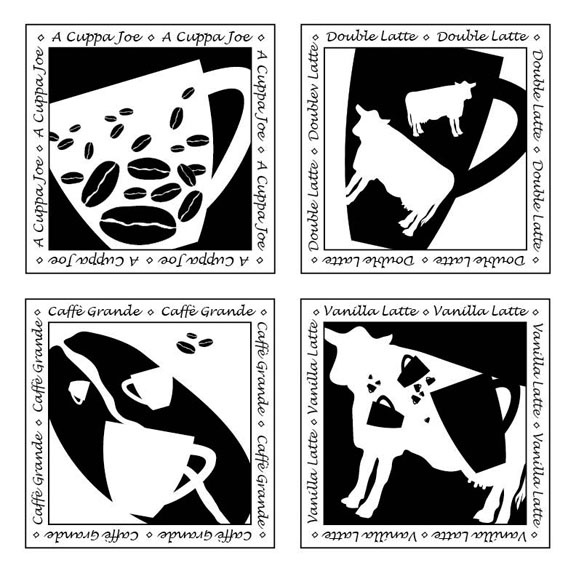An assignment in positive/negative space left me with several designs which looked like coasters. I decided I should make coasters for Christmas presents, and the best way I could think to transfer the design was silk screen. This was a learning experience.
 My first challenge was finding a clamp on shop lamp with a high enough rating to take a 150 watt bulb. Then I had to order the correct bulb in order to follow my exposure instructions.
My first challenge was finding a clamp on shop lamp with a high enough rating to take a 150 watt bulb. Then I had to order the correct bulb in order to follow my exposure instructions.
Next I questioned the exposure time in the Speedball instructions. 15 inches high for only 7 minutes if I have a shop reflector, but 12 inches high for 45 minutes if I use a pie pan reflector. A service rep at Speedball said that shop reflectors can vary greatly, and I should do a test before I do my expose my final screen. This website gave helpful instructions for testing exposure times. Rather than going out to photocopy onto a transparency, I used an old transparency with a small amount of typing on it, and painted numbers with acrylic paint. To make sure my paper for covering up numbers every five minutes was opaque enough, I glued aluminum foil to the back of some scratch paper. I ended up with 15 inches high for 85 minutes, and have decided the 7 minutes in the instructions has to be a typo.
Coating the screen evenly seemed impossible. I have an older screen, and don’t know if it is silk or polyester. It seems to stretch slightly when it gets wet, which made my squeegee only able to touch the screen near the edges after I had emulsion on the front. I ended up trying to smooth out the emulsion and make it smooth with a paintbrush.
After exposing it, the places where the emulsion was thicker didn’t want to rinse out, so my prints ended up somewhat spotty. I also learned that the glass holding down the transparency should cover the whole design. I thought the being a quarter inch short on the sides wouldn’t matter, but it left a line where the edge of the glass was. The courser light fabric in this photo is my drapes, and not part of the screen.
 Making the prints was a simple process in comparison to developing the screen, and went rather quickly. I made some coasters for Christmas presents out of some, and have given them out without photos. I am making a couple of more sets and will show them in another post.
Making the prints was a simple process in comparison to developing the screen, and went rather quickly. I made some coasters for Christmas presents out of some, and have given them out without photos. I am making a couple of more sets and will show them in another post.



